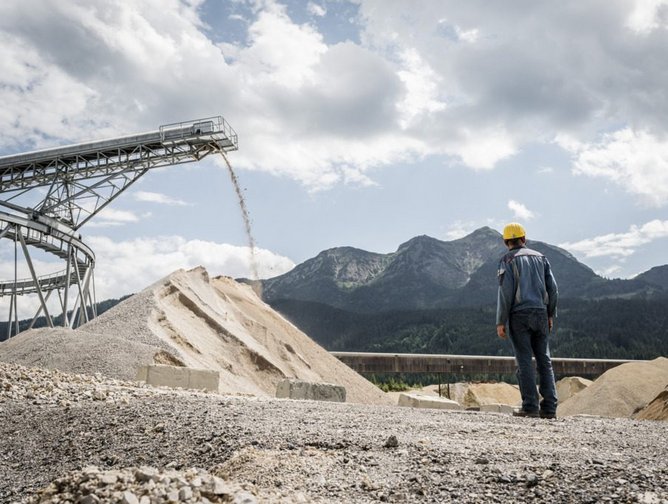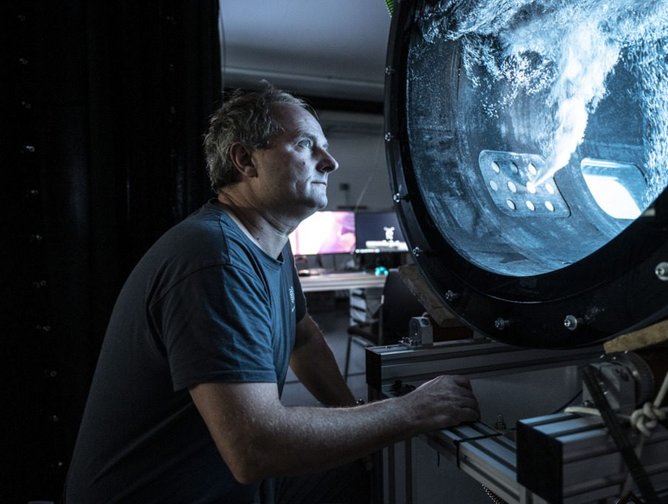RHI Magnesita’s pandemic problems a catalyst for change
The refractories industry is one that many people may know little or nothing about, yet it plays a pivotal part in many manufacturing processes, and without it all goods produced using high temperatures would cease production.
Refractories are heat-resistant materials used in industrial processes that require high temperatures – so anything that involves the use of furnaces, kilns and reactors. Refractories can withstand extreme temperatures and harsh operating conditions, ensuring the efficient and safe operation of industrial processes.
Typical minerals used in the production of refractories include magnesite (magnesium carbonate) and dolomite (calcium magnesium carbonate). Such materials are used to form heat-resistant bricks and surfaces for high-temperature equipment.
RHI Magnesita is the world market leader in refractory solutions, and its customers typically work in the steel, cement, non-ferrous metals and glass industries.
Because RHI Magnesita products are such an integral part of heat-driven manufacturing processes, many, many businesses rely in its supply chain to deliver the refractory products they need, when they need them.
Overseeing RHI Magnesita’s supply chain – and much else besides – is Simone Oremovic, whose three-pillared title is EVP, People & Culture, Supply Chain Projects, and Integrations.
“Ours are not well-known products most of the time but are essential for our modern lives,” says Oremovic. “They’re needed in the production of steel, cement and glass. So the construction industry needs us. The car industry needs us. In cellphones, there are components that couldn't be produced without refractory.”
“If we stopped production,” she says, with a serious look, “we would stop steel-making production worldwide within a few weeks.”
Dolomite and magnesite are the core product the company uses, and these are extracted via mining activities.
“We have some mines ourselves,” says Oremovic, “but sometimes we need to buy raw material on the market
The company’s biggest mine is in Brazil, and it also has mines in the US, China, Turkey and smaller ones in Europe, including Austria. “We obviously also try to match our production footprint to the existence of the raw materials,” she explains.
The pandemic was a huge challenge, and was the catalyst for RHI Magnesita to transform its supply chain, particularly around logistics.
The company has shifted from a very centralised global model to a much more regionalised model.
“Today it's about being closer to our markets and customers – giving them the confidence we are here, and that the accessibility to our products is here.”
Such a transformation required that the company ask some fundamental questions of itself.
“The choice we faced is whether we wanted to be a transportation company in addition to being a refractory company? We asked this question because we were so disrupted by the pandemic, and this left us feeling so suddenly dependent on our transportation and logistics providers.”
In the end, the company decided that it did not wish to be a logistics company but that it did need to change its approach to transportation.
“We realised we could no longer be opportunistic, buying a container here, a container there, and cancelling one here or there. We needed partnerships.”
She adds: “We made a conscious choice to strike strategic alliances with transportation and freight forwarding companies. We needed them to commit to volumes, but also to a sustainability roadmap that we could embark on together. Data sharing was another important part of it.”
Setting itself down the route of partnerships also meant the company had to adapt its processes.
“With the processes, we opted for a transportation management system. We have invested in software but also new skills, capabilities and ways of working – because such things only work when you work holistically, from top to bottom.”
So what difference has the transformation made – both to RHI Magnesita and its customers?
“Before, things were very operational,” says Oremovic, “Once we had products to ship we looked at the best options to transport. We bought the transportation, and we shipped it. Now, three things are very different.”
The first, she says, is the company’s data intelligence: “We know much better in advance how much we need, from where, to where, and what the best routes are. Our approach to quality and professionalism has changed.”
She adds: “It was a big investment, not just in tech, but also people. We've upgraded the team, and have invested in headcount. You need the right people with the right mindset and skills. Of course, you also need processes to help them.”
The second big change is its investment in IT.
“We have partners on the IT and system side, who have helped provide end-to-end visibility,” she explains. “Visibility is something we now have more and more in our company, not just in supply chain.”
The third pillar of change is the company’s new-found partner ecosystem. JAS Freight Forwarding is one such partner. “They're now an exclusive partner for us in certain regions,” says Oremovic.
RHI Magnesita’s partners have helped it shorten it supply chain in technology terms, even if physically it is the same size.
“Mines are mines,” says Oremovic. “They are where they are; you can’t move them. So the production footprint has not changed, but the demand planning has.”
She adds: “In the past we had a simplistic view. Sales tells you what you need to produce, make a demand plan, translate this into production, and that was it.
“But now, we challenge this much more. How much safety buffer is in the demand plan? How reliable is it? How good is the data? This is now the starting point.”
“A supply chain is optimised only when input data is reliable. This wasn't any big system implementation. There was no big capital expenditure. It was a mindset change, and that's often the hardest. It’s hard to tell every single salesperson to do things differently, but this is where we started.”
A big focus in the transformation process was on inventory.
“We knew we needed better transparency on inventory,” Oremovic says. “How much coverage do we need? How regional can the inventory be? How can we optimise the warehousing strategy? These were the kind of answers we needed, so this is really optimising the core part of the supply chain, and it’s hugely important as it’s linked to working capital.”
Optimising transport was another area of focus. To do this, the company looked at a regional-for-regional model.
Oremovic says: “We rearranged our footprint, which was very complex for us, by looking at what production could be done somewhere else by product transfers. Product transfers can take months but we have done this in certain instances to regionalise things more.
“This is a learning out of the pandemic, because we saw how dependent we were on transportation, and how painful it was to see ports closed, borders closed and workforces being unavailable.”
This all means the company is also more resilient.
“We’re better prepared in terms of data, knowledge, transparency, and forecasting capabilities, which cannot be underestimated. We are better prepared because we have strategic partners but also because we are much more regional.”
So much for the benefits to RHI Magnesita of the transformation; what about the benefits to its customers?
“The biggest benefit for our customers is the reliability of our products,” says Oremovic. “At the end of the day, what’s a customer’s biggest need? They want products on time - so the big plus for them is that everything arrives in full and on time.“
But she concedes that certain customers prize other things just as highly highly as reliability.
“It's also the service we give in addition,” says Oremovic. “Sometimes it's the price component, or it's also the fact that we are flexible in how we adapt certain products for customers. But ultimately, once you have an agreement with a customer they all want what they have ordered in time.”
“We have improved our delivery massively. We had moments where we had a very low-score percentage on deliveries, due to all these disruptions. Non-availability of raw material. Non-availability of labour, due to COVID. Shifts that we had to shut down. Transportation that wasn't available. Energy prices that were crazy.
“This is why we had to rethink. And now we can say we are a very reliable partner again for our customers. And that's at the end of the day what counts.”
But amid all the changes, the biggest challenge was taking its people along with it on the transformation journey – something for which Oremovic was uniquely qualified.
“I came with 20 years’ experience of people and culture, particularly on leadership and integration work,” she explains. “This was the reason I was hired. I joined at a time when RHI and Magnesita merged – the numbers one and two in the market. They brought me in because of my people-management experience.”
She adds: “as well as people management, supply chain is a big part of my job. Some might say supply chain is very different to a people-and-culture job but I don't think so, particularly when you get to executive level. You need a vision, you need to inspire, and to give guidance and clarity. You also need the right people with the right mindset and skills.”






